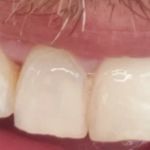Causes of Cavities in Baby Teeth and How to Treat Them
- 1- Causes of Cavities in Baby Teeth
- 2- Recognizing the Symptoms of Cavities in Baby Teeth
- 3- Effective Treatment for Cavities in Baby Teeth
- 4- Preventing Cavities in Baby Teeth
- 5- Real-Life Cases of Baby Teeth Cavities
- 6- Conclusion: Protecting Your Baby's Smile
1- Causes of Cavities in Baby Teeth
Cavities in baby teeth are a common concern for many parents. These cavities are caused primarily by the buildup of plaque on teeth, which contains bacteria that produce acids that can erode the tooth enamel. Poor oral hygiene, sugary diets, and even prolonged exposure to liquids like milk or juice can contribute to the development of cavities in baby teeth.
One of the most significant risk factors for cavities in young children is frequent snacking, especially on sugary or sticky foods that remain on the teeth for an extended period. Additionally, if a baby is put to sleep with a bottle, especially containing sugary liquids, it can create an environment where bacteria thrive, leading to tooth decay.
2- Recognizing the Symptoms of Cavities in Baby Teeth
Recognizing cavities in baby teeth early can prevent more serious dental issues down the road. Common signs that a baby may have a cavity include:
- Visible holes or dark spots on the teeth
- Increased fussiness or pain while eating
- Bad breath or an unusual taste in the mouth
- Swollen or bleeding gums
If any of these symptoms appear, it is important to consult a pediatric dentist as soon as possible to prevent the cavity from worsening.
3- Effective Treatment for Cavities in Baby Teeth
Treating cavities in baby teeth involves a few key steps. First, a pediatric dentist will assess the severity of the cavity. If it is a small cavity, it may be treated with fluoride treatments or dental sealants to stop the decay. However, if the cavity has progressed, the tooth may need to be filled with a dental material such as composite resin to restore its function and prevent further decay.
In more severe cases, a baby tooth may need to be extracted, but this is typically a last resort. It’s always best to address cavities early on to avoid any drastic measures.
4- Preventing Cavities in Baby Teeth
Preventing cavities in baby teeth requires consistent and proactive care. Here are some essential tips for parents:
- Brush your baby’s teeth twice a day with a soft-bristled toothbrush.
- Limit sugary foods and drinks, particularly before bedtime.
- Introduce flossing once your baby’s teeth are close together.
- Schedule regular dental check-ups starting by the first birthday.
- Consider fluoride treatments as recommended by your pediatric dentist.
By following these preventive measures, parents can greatly reduce the risk of cavities in their child’s teeth.
5- Real-Life Cases of Baby Teeth Cavities
In one case, a 3-year-old child experienced severe cavities due to prolonged exposure to juice in a bottle before bedtime. The child’s mother noticed his discomfort while eating and brought him to the dentist, where the cavities were diagnosed. The dentist suggested a combination of fluoride treatments and dental fillings to restore the child’s teeth.
Another case involved a toddler who loved sweet snacks throughout the day. This led to multiple cavities in their baby teeth, which required fillings. After a few follow-up visits and improved oral hygiene habits at home, the child’s teeth remained healthy and cavity-free for the following years.
6- Conclusion: Protecting Your Baby's Smile
Protecting your baby’s smile starts early, and being vigilant about oral hygiene is crucial in preventing cavities. By understanding the causes, recognizing the symptoms, and providing the right treatments, parents can ensure that their baby’s teeth stay healthy for years to come.
If you're looking for ways to help protect your child's dental health, consider consulting a pediatric dentist for personalized advice and treatment options. The earlier you start, the better the outcomes for your child's future smile.







 Maui Whitening Orlando4.0 (32 review)
Maui Whitening Orlando4.0 (32 review) Bloomington Southside Dental Care3.0 (26 review)
Bloomington Southside Dental Care3.0 (26 review) Christiana Dental Center4.0 (650 review)
Christiana Dental Center4.0 (650 review) Carolina Dental Arts - New Bern Ave4.0 (152 review)
Carolina Dental Arts - New Bern Ave4.0 (152 review) Equitas Health Short North Medical Center3.0 (96 review)
Equitas Health Short North Medical Center3.0 (96 review) Prosthodontics of Madison - Kendra Schaefer, DMD & Christine Roenitz, DMD4.0 (25 review)
Prosthodontics of Madison - Kendra Schaefer, DMD & Christine Roenitz, DMD4.0 (25 review) The Importance of Oral Health Education During Pregnancy for a Healthy Pregnancy
The Importance of Oral Health Education During Pregnancy for a Healthy Pregnancy Best Tips for Brushing Your Teeth Properly for Healthy Gums: Essential Techniques for Oral Health
Best Tips for Brushing Your Teeth Properly for Healthy Gums: Essential Techniques for Oral Health Why Skipping Dental Checkups Can Lead to Bigger Oral Health Problems
Why Skipping Dental Checkups Can Lead to Bigger Oral Health Problems Advantages of Porcelain Dental Restorations
Advantages of Porcelain Dental Restorations How Can Diabetes Cause Tooth and Gum Problems? Preventing and Managing Oral Health Issues
How Can Diabetes Cause Tooth and Gum Problems? Preventing and Managing Oral Health Issues Healthy Habits for Promoting Good Oral Health and Hygiene: Tips for a Healthy Smile
Healthy Habits for Promoting Good Oral Health and Hygiene: Tips for a Healthy Smile